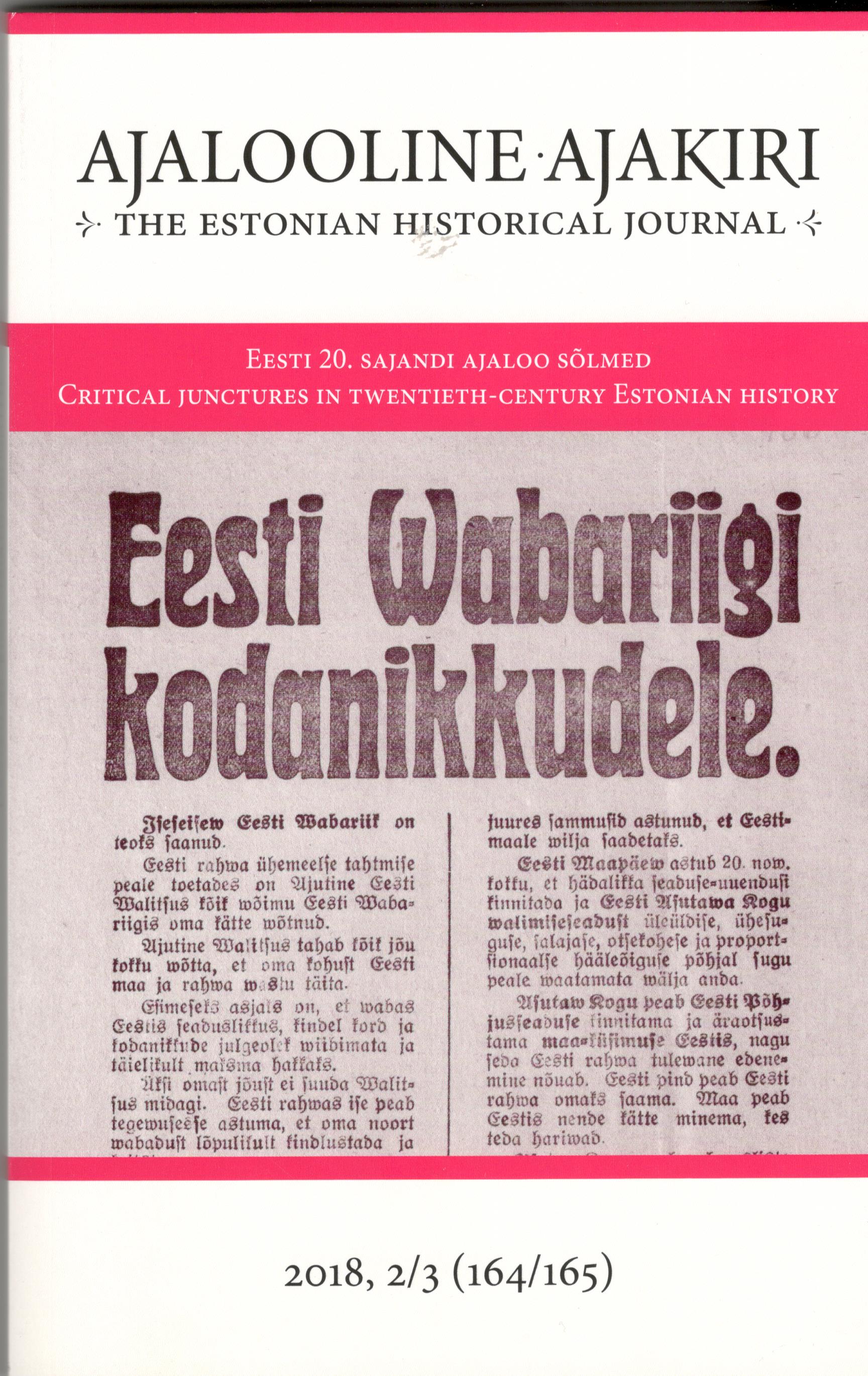Kirjandus kui vastupanu Nõukogude Eestis Teise maailmasõja järgsel perioodil
DOI:
https://doi.org/10.12697/AA.2018.2-3.06Keywords:
Estonian literature, Soviet Estonia, freedom, ideological resistance, aesthetic resistance, national resistance, modes of resistanceAbstract
Abstract: Literature as resistance in Soviet Estonia in the post-World War II period
The theme of this article is the resistance that took place in Soviet Estonian literature, literary criticism and literary studies in the post-Second World War period. The article accentuates that different modes and objectives of resistance were central in different periods.
Literary resistance is divided into four groups according to the nature of the pressure and the aims of resistance: first, ideological resistance to Soviet ideology in the name of literature that is free of ideology, or in the name of some other ideology; second, national resistance in the name of the unity of the people and preservation of identity; third, aesthetic resistance to the official literary doctrine; and fourth, resistance in the name of general or personal freedom and authenticity.
Writers and literary scholars used different modes of resistance. These were so-called writing for the desk drawer, silence within a text, the use of ‘secret codes’, self-publication, the selection of themes or modes of writing that were not favoured by the regime and were apolitical and nonideological, and the use of neutral words and concepts instead of concepts and words bearing Soviet ideology.
Totalitarian control of literature by way of decisions and direct instructions from the Communist Party characterised the Stalinist period (until 1956). All literature had to adhere to the doctrine of socialist realism. Practically the only form of resistance in this period was to keep silent. Some authors remained completely silent, some worked on translations, some wrote for their desk drawer for themselves and presented texts for publication that adhered to the officially sanctioned model. Keeping silent can also be interpreted as resistance in the name of aesthetic authenticity.
The subsequent period that lasted until the 1970s is characterised by an increase in liberty in society, including literature. The body of norms of socialist realism was relaxed. Literary activities were controlled by writers’ organisations according to the guidelines provided by the Communist Party. Different aesthetic and ideological camps of writers emerged and competed with one another. The era of keeping silent and writing for one’s desk drawer ended. Public resistance, which was united by the question of relating to literature that preceded the Soviet era, was at the centre of this period. The fight for aesthetic freedom and literature that was free of ideology carried on throughout this period and was finally won by 1968–69. By that time, socialist realism had essentially ended in Estonian literature. In place of it, avant-gardism, modernism and broader realism prevailed. In place of Marxism-Leninism, non-Marxist ways of thinking had become important: first and foremost existentialism, but also Buddhism, Zen Buddhism, Taoism and classical psychoanalysis.
Secondly, resistance was put up in the name of Estonian national unity and national memory. This was resistance in the name of authors who had been banished from the history of literature and of bringing back the pre-war metalanguage. This was concerned with modern writers (symbolists, decadents, impressionists, expressionists) in Estonian literature from the early 20th century. Generally speaking, this struggle was successful.
The third struggle was waged in the name of creative freedom and the writer’s inner authenticity. Here political freedom and independence in general intertwined as ideals, with the Soviet system and any kind of system as the enemy that oppresses human freedom and independence: institutions and the state, machines and rationality, conformism and the middle-class way of life.
The third period of resistance began at the start of the 1970s and continued until perestroika. The so-called tightening of the screws took place throughout the state during this period and Russification was adopted as a new orientation starting in the mid-1970s. On the other hand, a socialist consumer society took shape in Estonia, characterised by Communist Party membership for the sake of one’s career and openly double morality. Ideological censorship in literature was intensified, along with the partial steering of literature by way of Party documents. Such new conditions brought new variants of resistance to the fore.
Nationalist resistance and resistance to Russification came to the fore in the 1970s and 1980s. Open struggle receded into the background. Covert resistance, primarily within individual texts, which had previously been insignificant, became central. This resistance used joint secret codes common to writers and readers (allusions, irony, parodies, and other such devices). The struggle continued in the name of a neutral metalanguage that is not ideologised. Resistance criticism, so to speak, took shape: keeping silent about negative assessments that could potentially have provided the basis for political accusations, and keeping silent about secret codes in texts that the authorities did not have to know about.
The struggle for words and concepts without ideological connotations at the level of phenomena that were ideologically important for the Soviet regime was a continuing theme: the Republic of Estonia, the blue, black and white colour combination, expatriates, deportation, and other such concepts.

